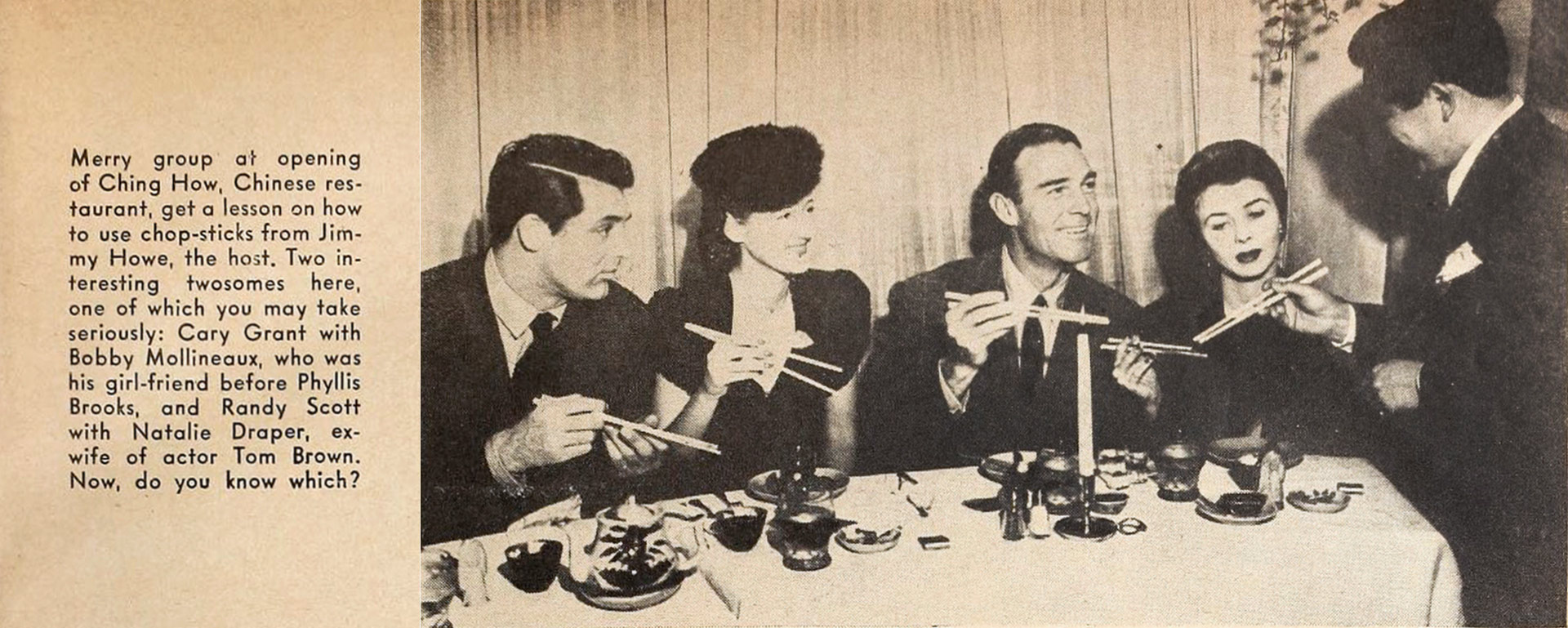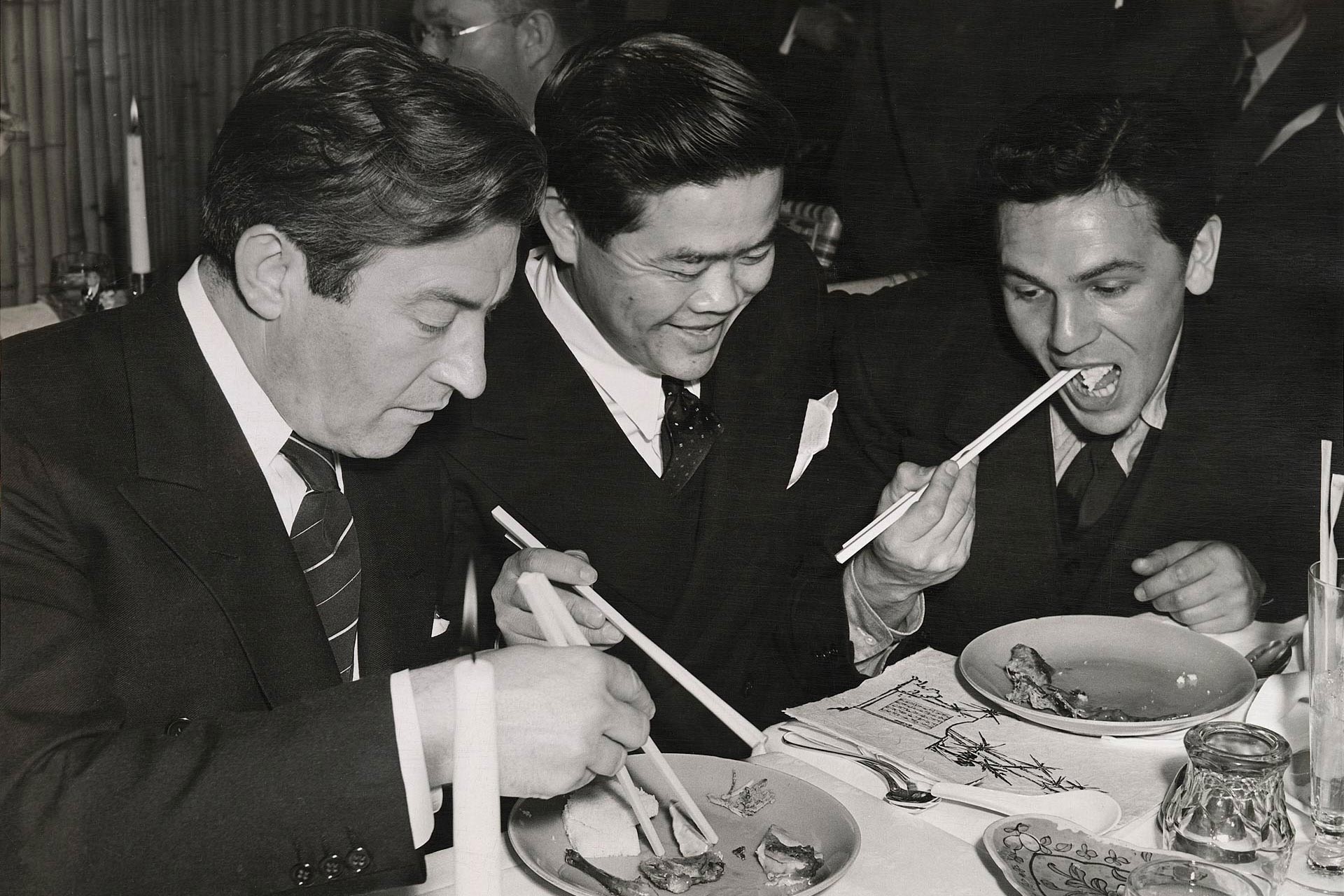
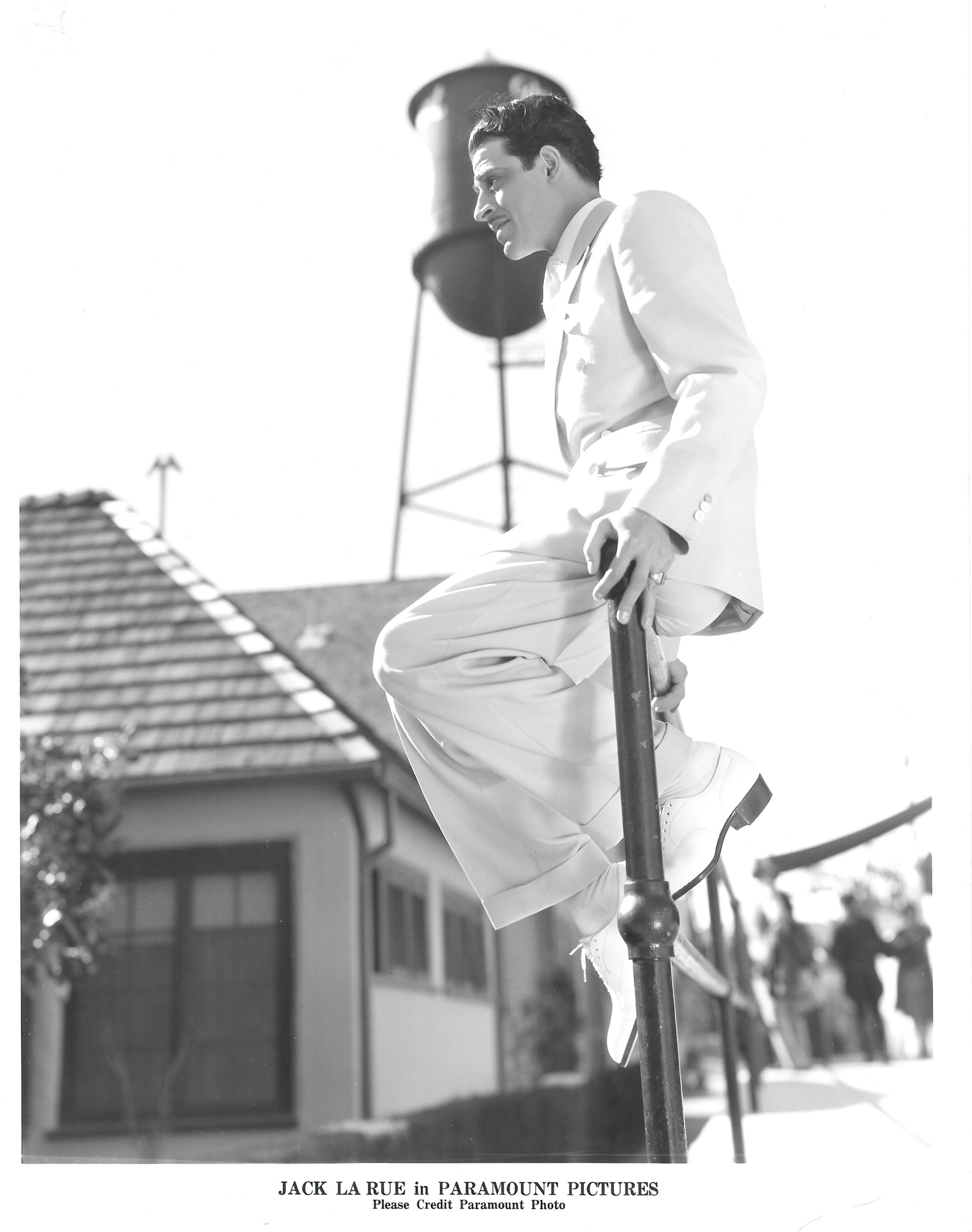
From their very beginnings, Toluca Lake and Studio City have served as fine-dining and nightclub hubs thanks to their well-heeled residents, upscale neighborhoods and nearby motion picture studios. Within a few years of these communities being founded in the 1920s, film and stage performers capitalized on their celebrity status and the adjacent entertainment districts by opening fancy restaurants and niteries. Three decades later, Toluca Lake would promote its own landmark gourmet restaurant row, one of the first in the Los Angeles area. The sampling of popular vintage restaurants and nightclubs included here led the way for today’s diverse eating establishments.
The Studio City area was an early hotspot for celebrity restaurants. In 1924, actor–comedian Raymond McKee opened the Zulu Hut at 11100 Ventura Blvd., the first roadhouse in the area. The thatched-roof eatery was notable as an early example of roadside vernacular architecture (a style known for buildings in novelty shapes, like the Bulldog Café, a re-creation of which stands behind Idle Hour in North Hollywood), but had a theme that would now be recognized as culturally offensive, featuring barbecue and fried chicken served by “Zulu” waiters. It burned down in 1931.
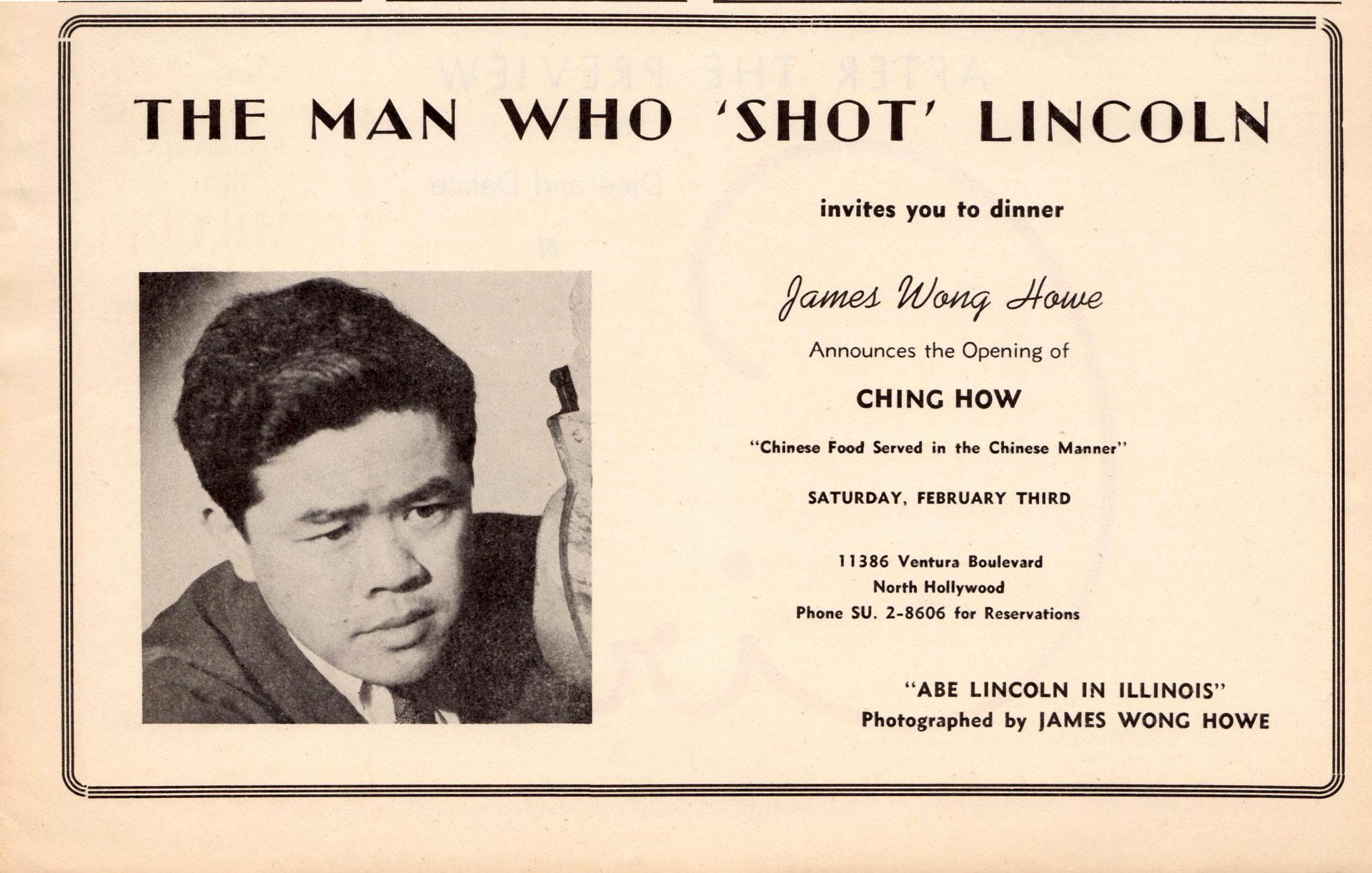
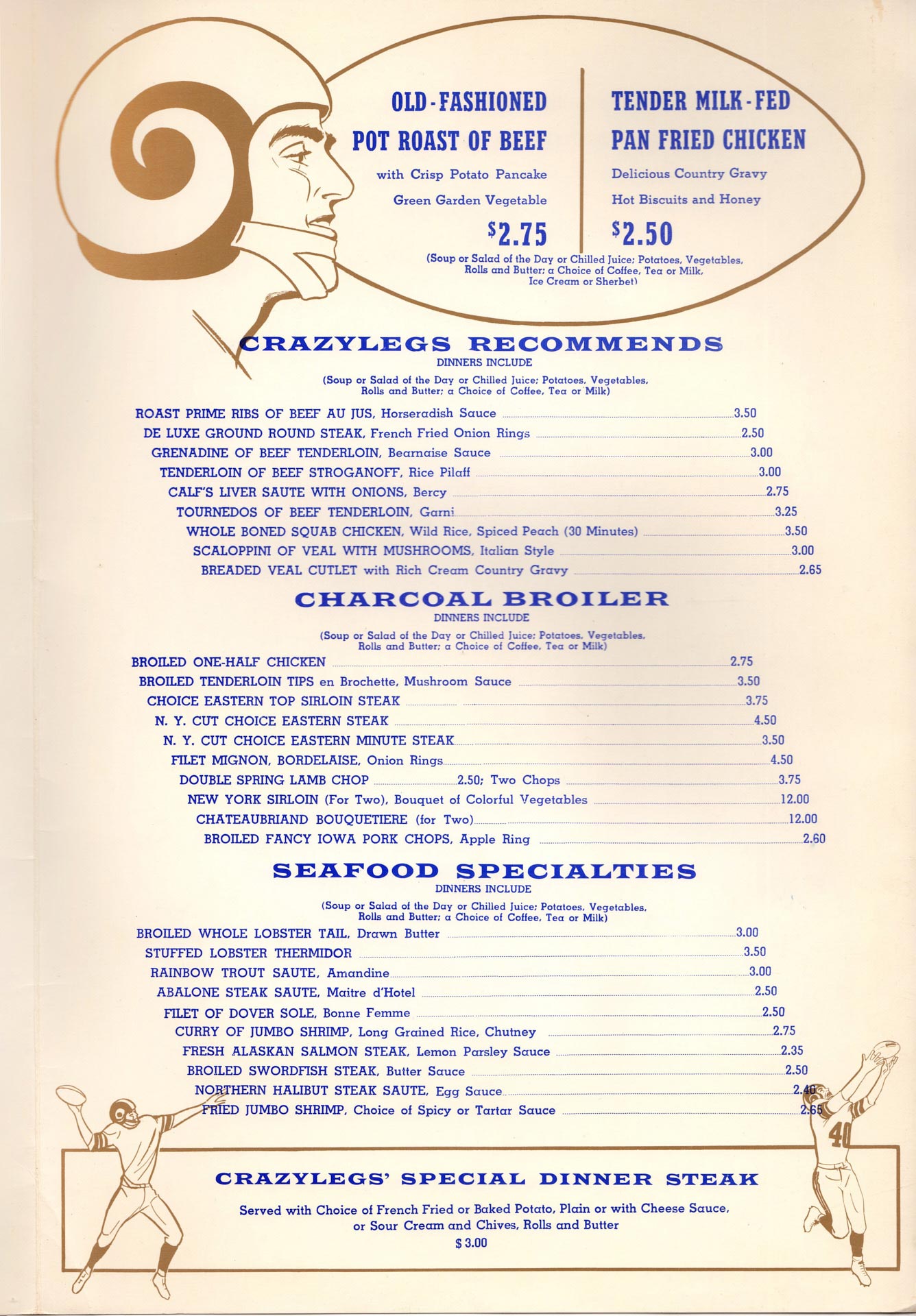
Opening as Casa Bella in 1937 at 11920 Ventura Blvd., film villain Jack La Rue’s Italian restaurant was later renamed after him and managed by his Sicilian immigrant family after they moved from New York. Boasting that it featured “Italian Food That Is Italian,” and promoted by images of La Rue as a gangster, the dining room remained open until 1946.
Academy Award–winning Hollywood cinematographer James Wong Howe and his wife, novelist Sanora Babb, opened Ching How at 11386 Ventura Blvd. in 1940, a time when the Exclusion Act forbade Chinese Americans from owning property, becoming citizens or marrying those of other races. Promoted as serving “Chinese food in the Chinese manner,” the eatery’s bilingual menu featured authentically prepared dishes. Opening-night guests included actors Cary Grant, Randolph Scott, John Garfield and Claude Rains, the latter two of whom starred in the Warner Bros. film Saturday’s Children, lensed by Howe. The restaurant was forced to close in 1952, when Babb was blacklisted by the House Un-American Activities Committee.

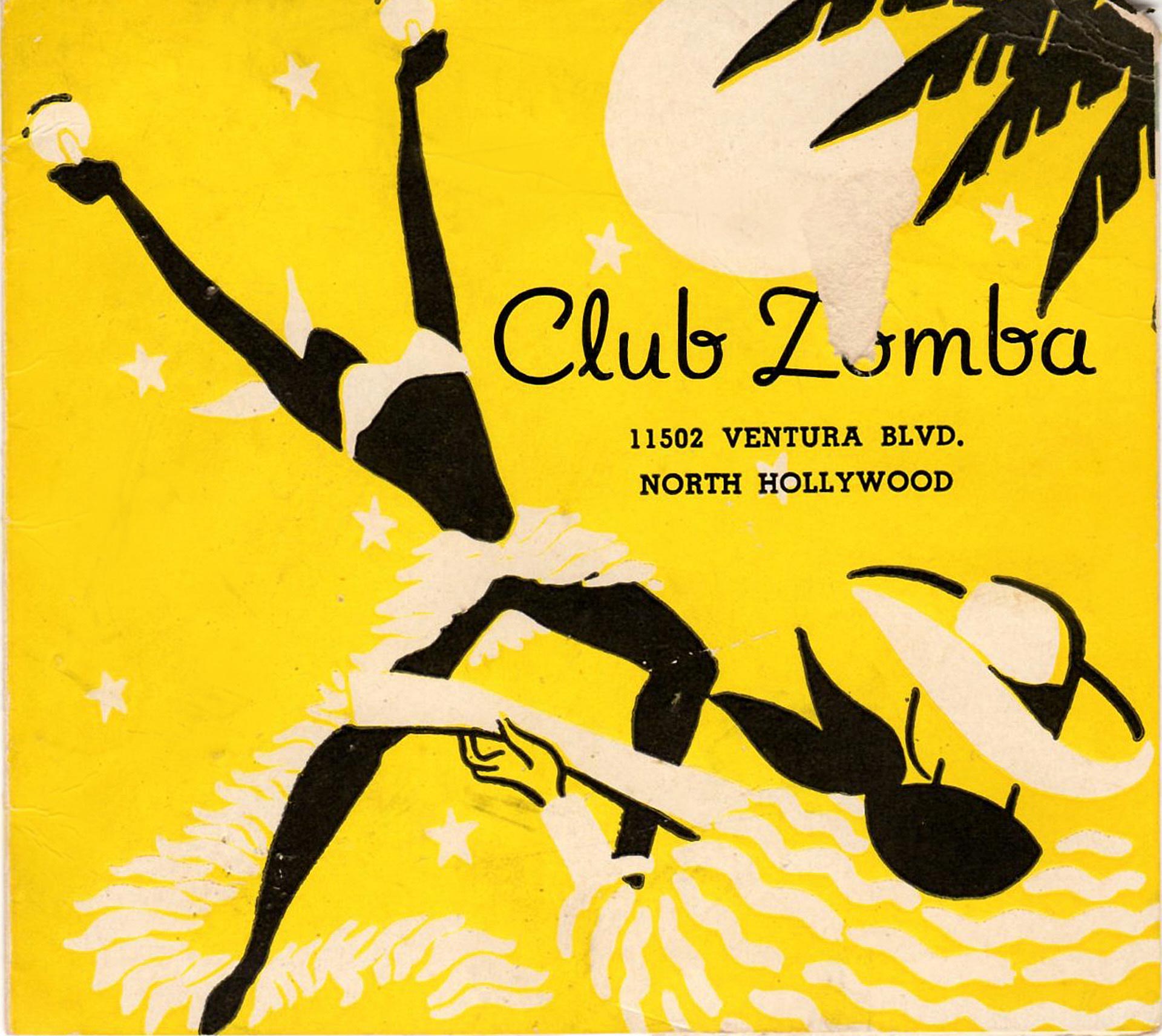
Sports stars even got into the action when Los Angeles Rams star running back Elroy “Crazylegs” Hirsch opened his Crazylegs restaurant at 12010 Ventura Blvd. in 1957. The short-lived dinery featured bartenders dressed as referees concocting original cocktails.
Over in Toluca Lake, the Smoke House Restaurant opened at the intersection of Riverside Drive and Pass Avenue on October 12, 1946, the brainchild of Lockheed employees Jim Stockton and Jack Monroe, backed by silent partner Bill Storey. In 1948, the establishment moved to its current location at 4420 W. Lakeside Dr., replacing the Red Coach Inn, which had originally been constructed in 1947 by actor–singer Danny Kaye, but never opened because the 6,000 square feet would not accommodate a large enough dance floor. In the 1950s, architect Wayne McAllister of Bob’s Big Boy fame remodeled it into the fantasy Tudor vision it remains today.
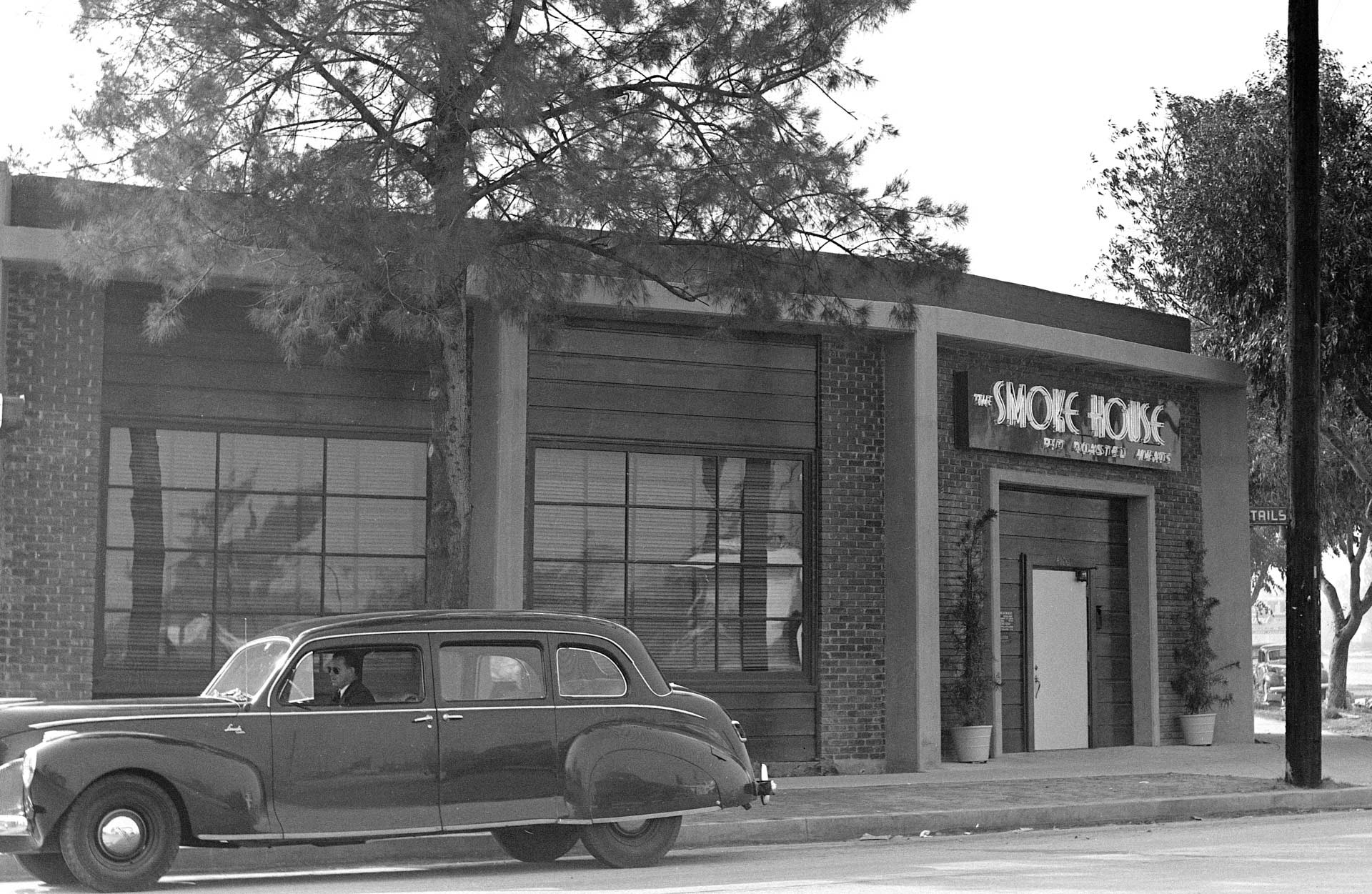
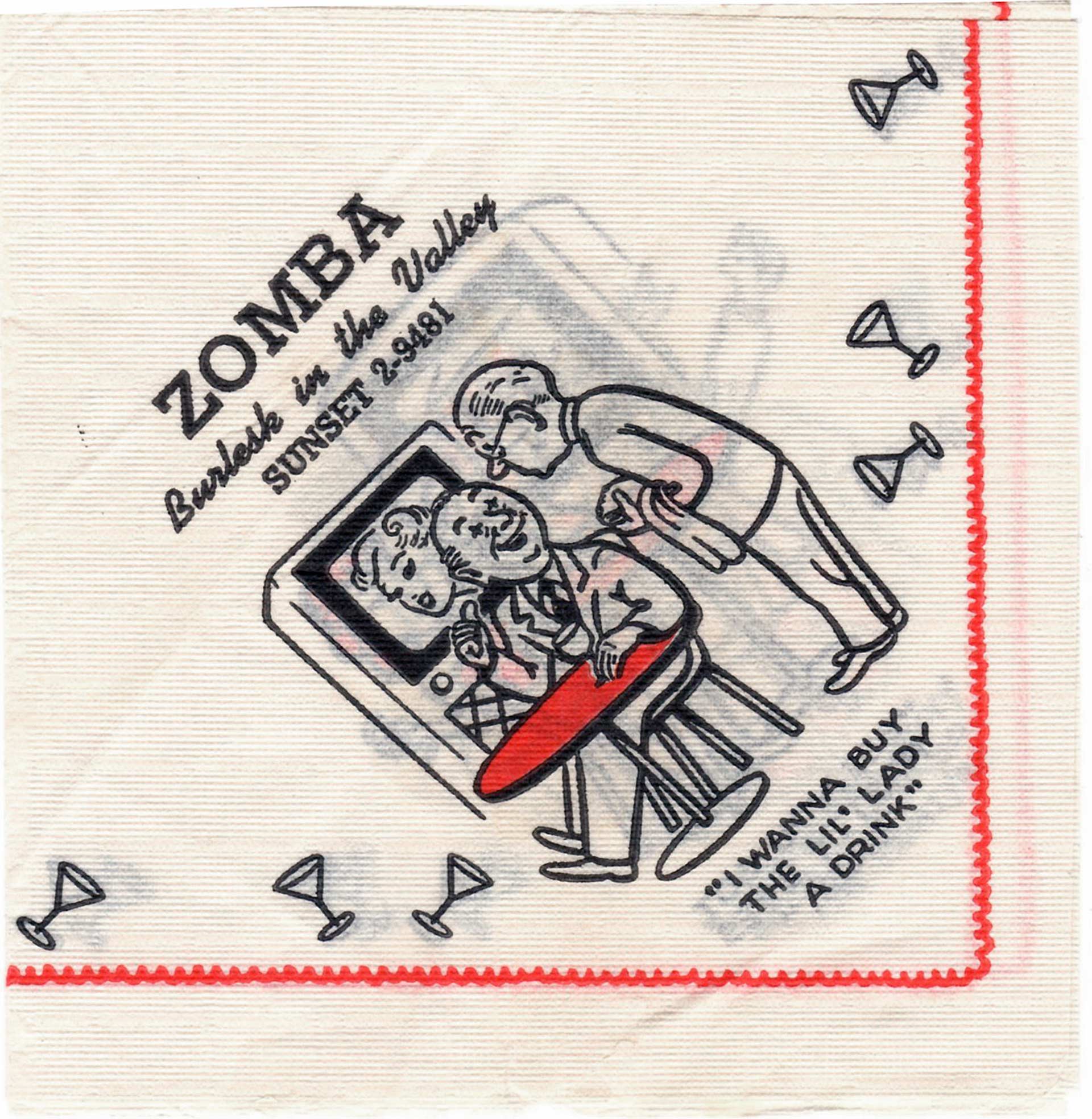
Thanks to surrounding film studios and the Valley’s wide-open reputation, nightclubs also flourished. Former vaudevillian Grace Hayes opened the Grace Hayes Lodge at 11345 Ventura Blvd. in February 1939 to boffo business after struggling to make it in Hollywood. Full of spunk and personality, Hayes organized high-spirited entertainment with plenty of showmanship. When she returned to New York, the lush Larry Potter’s Supper Club opened in its place. Featuring more upscale entertainment, the nitery served rich meals to its high-end guests. By 1959, entertainer Doodles Weaver organized weekend entertainment, which included such top acts as Mel Torme and the Ink Spots.

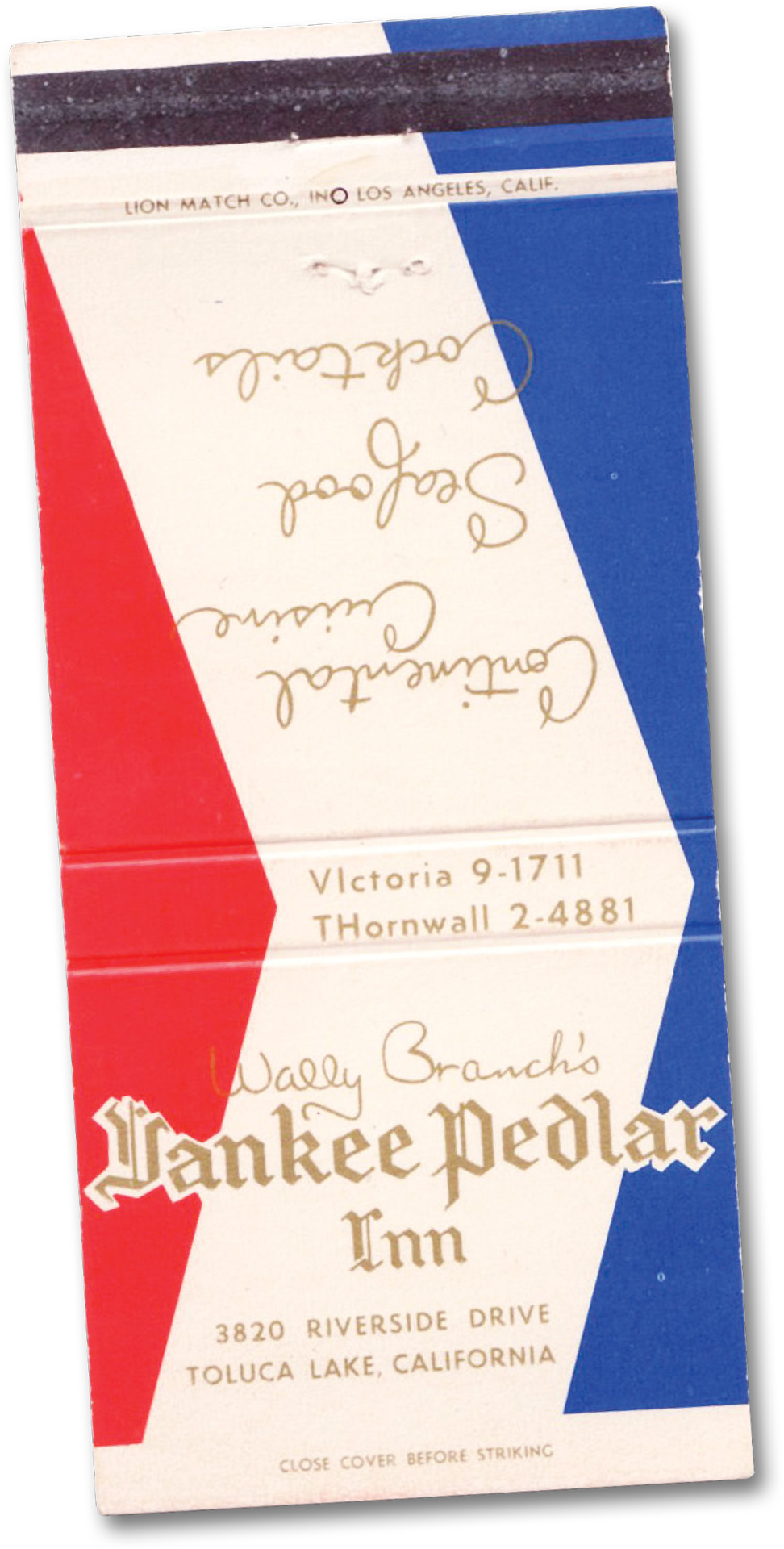
In 1963, leading Los Angeles radio disc jockey Bob Eubanks took over the club, converting it into a rock ’n’ roll hotspot aimed at teenagers and young adults. One of a chain of Southern California nightclubs he owned called the Cinnamon Cinder, the nitery served no alcohol, just soft drinks. Rising music acts like the Coasters, the Drifters, Buffalo Springfield, and Sonny & Cher would perform on its stage. It was here that the Beatles appeared at a secret press conference before their sold-out Hollywood Bowl concert on August 23, 1964.
American Bandstand host Dick Clark purchased the building to open a country and western nightspot called the V.I.S. Club on March 26, 1969. Managed by actor Jack Nance, the club featured singer Merle Haggard as its opening act. Clark revealed to Los Angeles Times writer Robert Hilburn that he had begun as a country and western disc jockey, concluding, “I’ve always liked country music.” Fancy but informal, the club featured pricey charter memberships at $150. The Point After, a disco filled with hotpants-wearing waitresses, replaced it in 1970. Later clubs to occupy the location included Sasch, Moscow Nights, Aftershock and Platinum Live.

The Zomba Cafe replaced a couple of nightclubs at 11502 Ventura Blvd. in 1941, offering colorful upscale burlesque entertainment. Former “Our Gang” child star Eugene Jackson served as orchestra leader while B-girls danced on raised platforms in the club. In 1968, it was succeeded by the San Fernando Valley’s first gay bar, Oil Can Harry’s.
Back in 1927, Carl and Ray Hollis had opened the La Fonda Wayside Inn at 12117 Ventura Blvd., combining traditional roadhouse fare with dancing to music by the La Fonda Serenadors. (The menu specified, “No, we do not bootleg, so please do not ask for Hooch.”) After La Fonda shut down in 1942, movie cowboy star Hoot Gibson purchased the building, converting it into the Painted Post, a western honky-tonk dance pavilion. Playing up the country connection with appearances by nearby Republic Studios cowboy stars, the club featured such entertainers as a young Roy Acuff and Jimmy Wakely and his band before closing its doors in 1946.
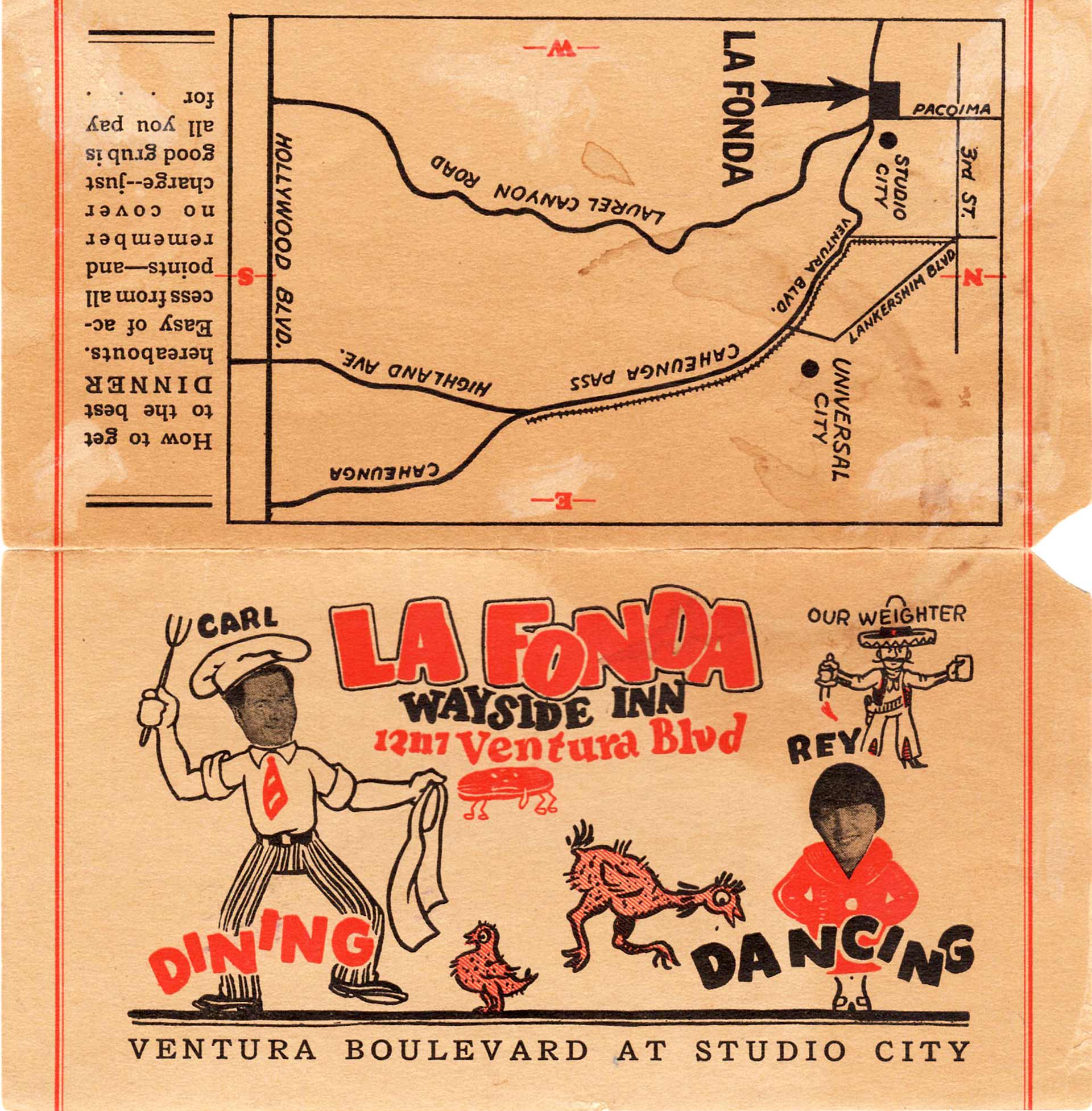
As clubs like Club Indigo, the Palomino and Donte’s proliferated in the area by the 1950s, restaurants even began featuring entertainment along with their potent cocktails. Burbank’s plush China Trader lounge at 4200 Riverside Dr. would host “Route 66” composer and singer Bobby Troup and his trio in the 1960s during its almost 40-year run.
By the 1950s, the Toluca Lake area had evolved from its original farming roots into the upscale residential district it is today, featuring such residents as Bob Hope, Frank Sinatra and Tex Ritter. Tiny mom-and-pop cafes gave way to fine dining. In the 1950s, the area featured a smorgasbord of restaurants offering Chinese, Mexican, Italian and continental cuisines. Purchasing ads in the November 1955 Los Angeles Times stating they were “all within a pitch and putt of the celebrity-studded Lakeside Country Club,” Alphonse’s, King’s Arms, Casa Toluca, Tick Tock, the Smoke House, Bill Storey’s La Paradiso, Sorrentino’s, Bob’s, China Trader and Delicacies of the Sea eateries promoted themselves as Toluca Lake’s gourmet colony.
While their names have changed over time, Toluca Lake’s restaurants retain their reputation for fine dining. Though little celebrity ownership remains today, media personalities still gather at these well-regarded hotspots. What new celebrated eateries will arise in our community in the coming years?
